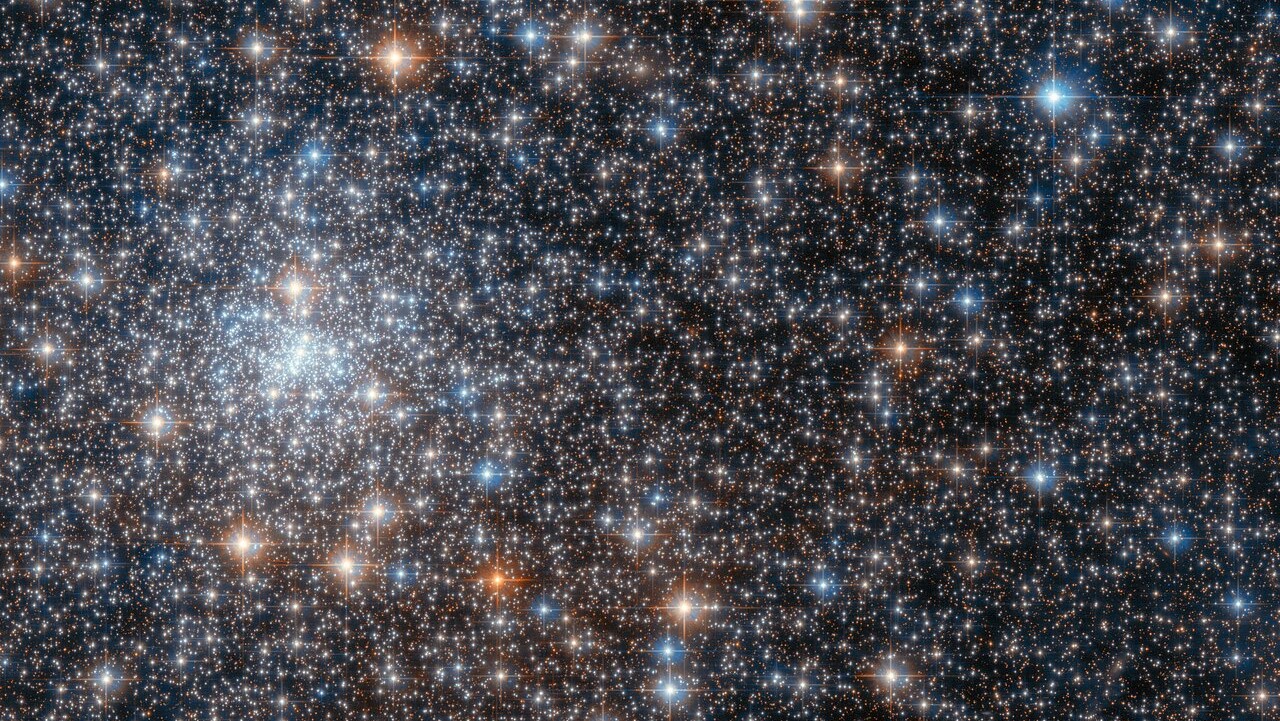Glimmering Hubble Space Telescope photo shows stunning starburst effect

The iconic Hubble Space Telescope has captured a glimmering new photo of a densely packed region of stars located in the constellation Sagittarius.
The grouping of stars is a globular cluster known as NGC 6558, which lies 23,000 light-years from Earth. At this distance, the cluster resides closer to the center of the Milky Way than Earth does, according to a statement from the European Space Agency (ESA), which released the image May 16.
The new photo was taken by the Hubble Space Telescope's Advanced Camera for Surveys, which is designed to survey large areas of the sky at visible and red wavelengths. The telescope is an international collaboration between NASA and ESA.
Related: The best Hubble Space Telescope images of all time!
"Globular clusters like NGC 6558 are tightly bound collections of tens of thousands to millions of stars, and they can be found in a wide range of galaxies," ESA officials said in the statement. "As this observation shows, the stars in globular clusters can be densely packed; this image is thronged with stars in a rich variety of hues."
The globular cluster features bright stars, some of which are surrounded by prominent diffraction spikes, or lines radiating from bright light sources. This visual starburst effect is created when starlight interacts with the telescope's mirrors, causing the light to bend.
"Globular clusters equip astronomers with interesting natural laboratories in which to test their theories, as all the stars in a globular cluster formed at approximately the same time with similar initial composition," ESA representatives said in the statement. "These stellar clusters therefore provide unique insights into how different stars evolve under similar conditions."
Get the Space.com Newsletter
Breaking space news, the latest updates on rocket launches, skywatching events and more!
The recent Hubble image was taken as part of a project to study globular clusters in the inner Milky Way, which may offer new clues into how such stellar groupings form and evolve.
Follow Samantha Mathewson @Sam_Ashley13. Follow us on Twitter @Spacedotcom and on Facebook.
Join our Space Forums to keep talking space on the latest missions, night sky and more! And if you have a news tip, correction or comment, let us know at: community@space.com.

Samantha Mathewson joined Space.com as an intern in the summer of 2016. She received a B.A. in Journalism and Environmental Science at the University of New Haven, in Connecticut. Previously, her work has been published in Nature World News. When not writing or reading about science, Samantha enjoys traveling to new places and taking photos! You can follow her on Twitter @Sam_Ashley13.









